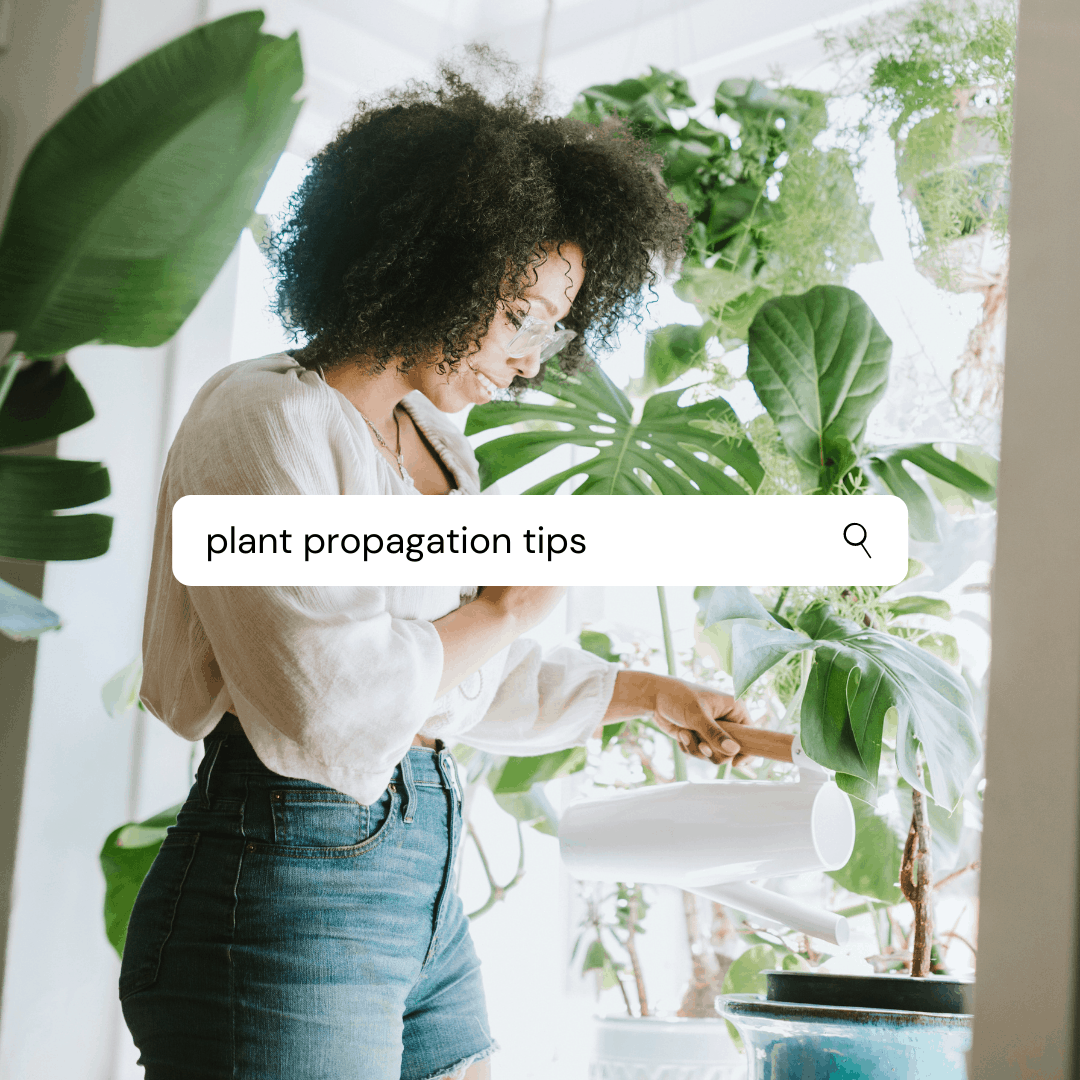How to Propagate House Plants
You need not be born with a green thumb to have a home full of lush greenery. For many of us, indoor gardening takes practice, a little trial and error, and a lot of internet searches. And once you have that first thriving plant you love, you can turn it into more beautiful plants through propagation.
Plant propagation can be accomplished by growing a new plant from seed, a cutting, or grafting. It’s a fantastic way to increase your own plant collection and is one of the most rewarding aspect of gardening.

Benefits of Propagating Plants
Growing indoor plants adds colour and livelihood to your home decor. It’s also good for your mental and physical health. Studies show that keeping plants in your home and office helps boost mood and productivity, while also reducing stress.[1] Some plants make a big difference to indoor air quality and have been shown to remove some air pollutants by as much as 75%.[2]
In addition to filling your rooms with plants that cleanse the air and create a low stress atmosphere, propagation:
- Provides a faster way to grow an established plant than growing it from seed
- Creates identical plants, so you know exactly which features it will display
- Gives you access to plant varieties that are difficult to source or grow from seed
- Saves money by not having to buy plants
Easy House Plants to Propagate
Taking a cutting is a simple method for propagating plants and a great option for beginners. Some of the easiest house plants for beginners to take cuttings from include:
- Succulents, such as jade, Echeverias, and aloe
- Flowering plants, such as snake plants and African violets
- Ficus
- Herbs, such as rosemary and thyme
- Pothos
- Spider plants
The Five Basic Steps of Propagation (by Cutting)
The goal of propagation is to take a cutting from an established plant and encourage it to produce its own roots so that it can become established as its own independent plant. This can be done in five simple steps:[3,4]
1. Choose a stock plant
Your stock plant should be healthy and well established. Any nutrient deficiencies or diseases it has will be transferred to the cutting. Water your stock plant the day before taking a cutting to ensure that it has sufficient moisture.
2. Prepare a root medium
Many plants will take root in basic tap water; however, these cuttings can have difficulty establishing themselves in dirt after being transplanted. To further support your plant cutting’s development, prepare a root medium, such as peat moss, perlite, vermiculite, rockwool, sand, or similar loose, well-draining material.
3. Take a cutting
Use clean, sharp scissors or secateurs to take your cut. Plants that naturally produce plantlets on their own, such as spider plants and aloe, can easily be propagated by cutting off the small plantlets at the end of their stems. They should already have immature root systems and shoots.
Other plants, such as ficus and jade varieties, can be propagated by making a straight cut (not angled) in the middle of its stem between the sets of leaves. Remove any flowers and flower buds from your cutting to make sure that its energy is directed to forming new roots and shoots.
4. Encourage root growth
Place your cutting is its root medium within a shallow, well-draining container. If your root medium is tap water, refresh it every one to two days to keep it clean. Set your cutting in a warm location with indirect sunlight.
5. Transplant
Once your cutting forms side shoots or roots down to the bottom of its root medium, transfer it to a container filled partway with moist potting soil. Fill the remaining spaces with potting soil, pressing gently to prevent air pockets. Place your plant in a location with appropriate light and humidity for the variety. Sit back and enjoy your newly propagated plant!
Responsible Propagation
Plant propagation is a wonderful way to expand your plant collection and improve your home or office environment. Although the process takes a bit of practice, your sense of achievement upon seeing your first successfully propagated plant will make it all worthwhile.
Remember to always use your plant propagations responsibly by not sharing or selling those created from patented varieties of stock plants.[5]
References:
(1) Lee MS, Lee J, Park BJ, et al. Interaction with indoor plants may reduce psychological and physiological stress by suppressing autonomic nervous system activity in young adults: a randomized crossover study. Journal of Physiological Anthropology. 2015; 34:21.
(2) Tarran J, Torpy F, Burchett M. Use of living pot-plants to cleanse indoor air – research review. Internet Conference on Indoor Air Quality. 2007; 43.
(3) Missouri Botanical Garden. Propagating Plants by Cuttings [Internet]. Missouribotanicalgarden.org [cited July 10, 2020]. Available from: https://www.missouribotanicalgarden.org/gardens-gardening/your-garden/help-for-the-home-gardener/advice-tips-resources/visual-guides/propagating-plants-by-cuttings.aspx
(4) RHS. Cuttings: semi-ripe [Internet]. Rhs.org.uk 2020 [cited July 10, 2020]. Available from: https://www.rhs.org.uk/advice/profile?pid=404
(5) Government of Canada. Plant breeder’s rights [Internet]. Canada.ca 2019 [cited July 10, 2020]. Available from: https://www.ic.gc.ca/eic/site/cipointernet-internetopic.nsf/eng/wr04589.html
.png)